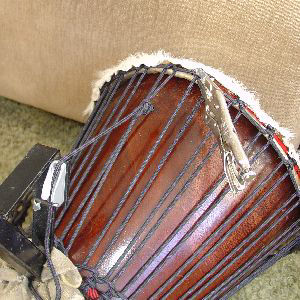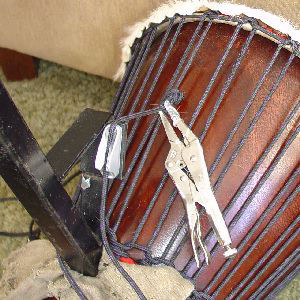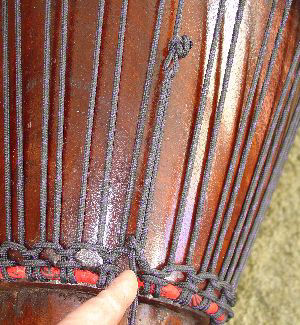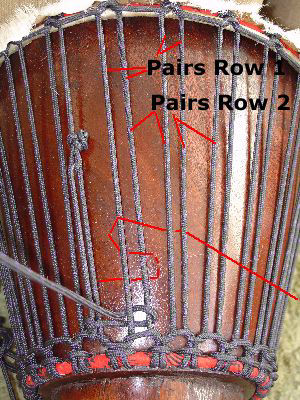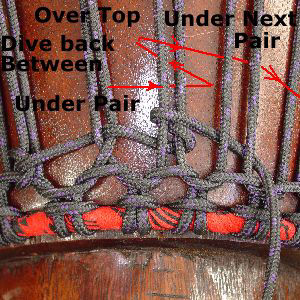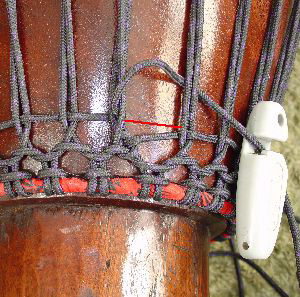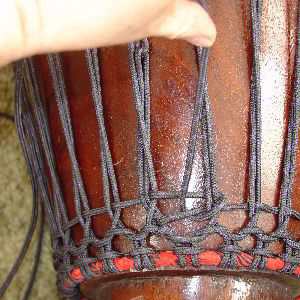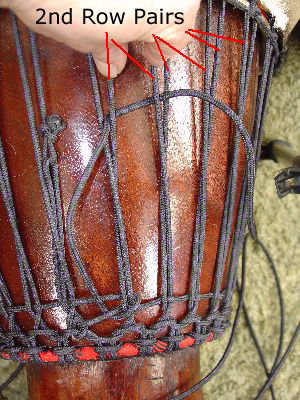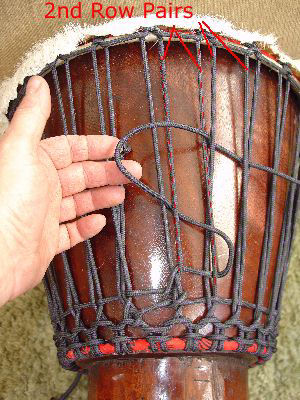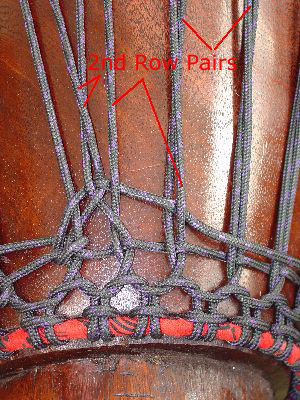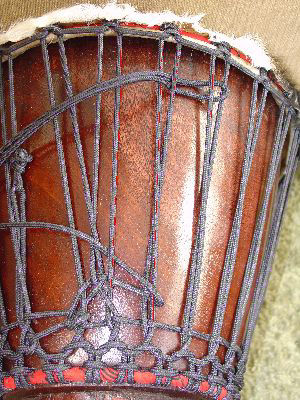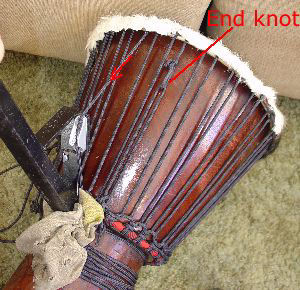
DRY? Tune the Djembe
Find your vertical rope end knot, and verify which direction you need to pull from to take all the slack AWAY from the loop. In our case it means work slack out to the left. I start with the second "down rope". That is the left of the pair of ropes through the first cradle knot to the left of the one with the loop knot on the top ring. I use the Rope Wizard but you can use a wooden stick. Begin tightening the vertical ropes
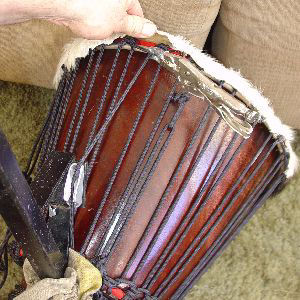
Hold Each Pull
I use a needle nose vise grip with either some duct tape on the teeth, or the teeth dulled with a grinder. Be careful to not scar the rope, or damage the skin at the hide ring. Pinch the cradle rope and the vertical down rope together to lock them against slip.
NOTE: These days I pinch the two adjoining verticle ropes together to hold a pull. It works fine and you don't have to lift the hide, or damage cradle ropes!
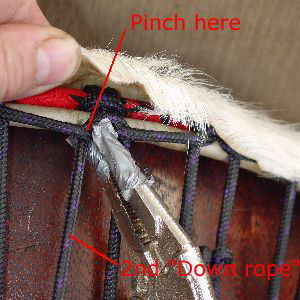
Pinch Ropes
Put just enough tool on to grab the rope. You hold tension on the rope until you get it locked with the vise grips. I often lean forward as I am stradling the trumpet, and tuck the end of the rope wizard under my arm pit. That way I keep tension on the down rope and have two hands free to move the locking pliers. A good quality pliers makes the process much easier. I've tried angle needle nose and stub nose and for me regular needle nose works best. detail
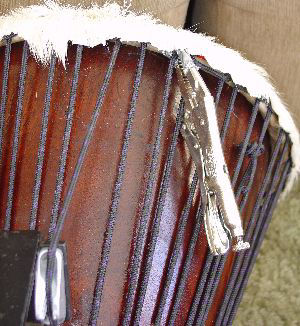
Work Away from Knot
I then leave the pliers on while I move my pry bar, and don't move the locking pliers till I've got tension on the next down rope. Using this method you have NO back slip of the rope at all. The ropes should have been pulled pretty tight when the head was mounted so with the rope wizard you can pull pretty firmly. I can drop the skin about a 1/4 inch with a pull like this. I try to be just darn firm pulling about the first third of the drum so I don't skew the head too much with this powerful tool. the last half I am pulling against already tight rope so I pull about as hard as I can. By the time I am half done this drum sounds good already, a good sign.
